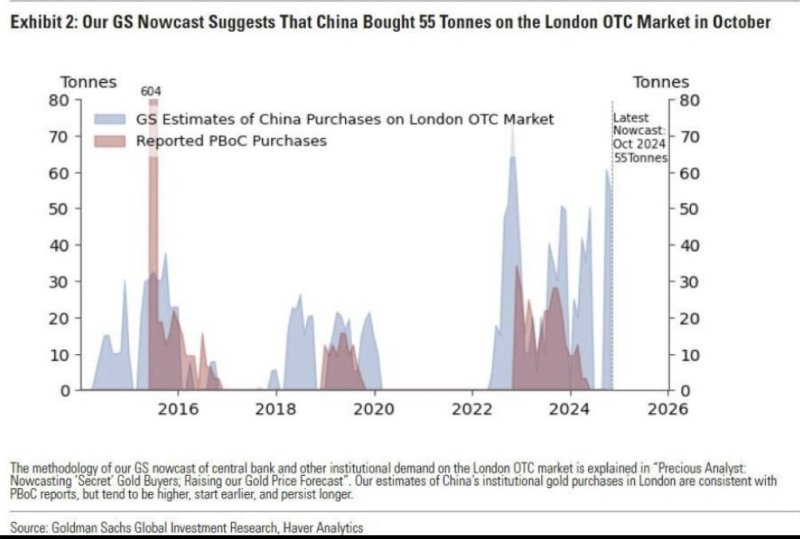- I, Robot
- Quantum Supremacy
- Austin and Newport Beach
As longtime readers know, I am working on a book outlining five different theories on historical cycles and how their predicted “climaxes” all occur around 2030. I’m also very concerned that around that time (if not before) we will see the bond market react badly to the fast-growing national debt. While my poor editors at Wiley are very concerned with my delivery being somewhat behind schedule, I really am making progress.
But rather than describe a crisis this week, I want to talk about some remarkably good things that may be happening in that same period. This seems more in keeping with the holiday spirit.
The quote (commonly attributed to Mark Twain), “History doesn’t repeat itself, but it often rhymes,” keeps coming to mind as I write and edit. But there’s a part of what I believe will be involved in this future turmoil that will not have any historical rhyme. That is the part that comes from the optimistic side of me. Simultaneously with the crisis I expect will be significant technological change and progress.
We have had crises amid technological change before, but I don’t believe that we have ever experienced the pace of change that will happen this time. We went from 70% of the country working on farms or agriculture-related jobs to the factories within about five generations. Now, 200 years later, only a small part of the US works in agriculture, but we feed not only ourselves but much of the world.
In the early 1900s, much of the country was involved in manufacturing. Today, it is really under 10%, even though we are producing more products than we ever have. Service-producing sectors now account for the bulk of our GDP.
Everyone is fascinated with artificial intelligence, and rightly so. In addition, I think there are three other technologies that are going to be just as impactful to the economy and our lives, in part because of their interconnection with AI.
I, Robot
The movie I, Robot was based on Isaac Asimov’s short story collection and influenced by his robot series. The movie postulated a large robot population doing much of the tedious work in 2035 Chicago. They were humanoid robots.
My friend Peter Diamandis has written a short 55 page report called The Rise of Humanoid Robots on the state of the robotic industry. It is advancing much faster than most people realize. Bottom line up front? Elon Musk, among others, is working to bring the cost of a fully functional dexterous humanoid robot down to $20,000 within 10 years. After describing the industry, Peter does a brief highlight of 16 companies working to bring about this vision.
“By 2040 there could be a billion bipedal robots doing a wide range of tasks, freeing humans from the slavery of the bottom 50% of really undesirable jobs like assembly line and farm workers. This could be a larger industry than the auto industry.”
—Vinod Khosla, Khosla Ventures
“If you’ve got a sentient humanoid robot that is able to navigate reality and do tasks at request, there is no meaningful limit to the size of the economy.”
— Elon Musk, Tesla
Size estimates for the robot industry are all over the board from tens of billions to multiple trillions. Khosla’s guess of 1 billion bipedal robots by 2040 is actually among the more conservative estimates.
At $20–$30,000, a robot would actually cost about $300 a month. Such a robot would be able to clean your house and do some of your chores. More expensive robots would be able to do more, of course, like working in factories and agriculture (although likely tailored for specific jobs) but as the cost of the robots falls, the cost of products and services will come down.
And as the report highlights, not only is the price of robotic machines falling rapidly, their utility is also increasing. Sixteen major companies are racing for a share of what will be a huge industry within not too many years.
Let’s put it in the personal context. If you could lease a robot for $300 a month that would do useful work for 100 hours a week (not a stretch) the hourly cost would be under $1. If you can’t think of enough tasks, you could share a robot with your neighbor. There will be early adopters at higher prices who will help find the activities they can do. For instance, I stayed at the Marriott Renaissance in NYC for four nights and my room was only cleaned once. I enjoyed my stay but maybe they were having labor issues? One supervisor could oversee a fleet of robotic maids and room service attendants. Trust me, that is coming.
There are companies that have been working on humanoid robotics for several decades now. So, Peter asked, “why now?”
“The first question to ask is why now? Why are we seeing such an explosion of activity in the humanoid robot field now? Beyond any single technical advancement, the convergence of 5 major technological areas is super-charging this field: multimodal generative AI, high-torque actuators, increased compute power, enhanced battery life, cameras and tactile sensors. This, in combination with AI voice recognition, is transformative: As Brett Adcock recently told me, ‘We can literally talk to our robot and it can implement the tasks you request—the end-state for this is you really want the default UI to be speech.’“
Some worry about robots taking jobs, but then again, those people don’t want to do the jobs the robots will be doing. Many of the robots will become time-saving personal conveniences, but others really will take human jobs. And unlike previous technological advances, this one is not going to happen in 4 to 5 generations, but in half a generation.
The good news is that robotic adaptation will be massively deflationary. But it does have the potential to create structural shifts in employment. In the past, every new technological revolution that reduced the need for human workers was accompanied by new industries demanding even more workers. I could list scores of examples. But those transitions were over longer periods of time. Ultimately, I think that will be the case with robots. And all this will be happening with the background of social, political, and geopolitical crises. Just something to think about…
Quantum Supremacy
I am part of an extraordinarily diverse group which gathers every Tuesday evening by Zoom to talk about their part of the trading world, what’s happening in various industries, geopolitics, and so on. One of the threads was on some recent developments in quantum computing. I must confess, I have been aware of quantum computing for quite some time, but it was one of those things that always seemed far off. It’s now getting much closer. A second conversation this week with a person very familiar with the industry says we will be seriously using quantum computers by the end of this decade.
We all saw the recent Google announcement about the new quantum computer solving a very complex problem. Israel just announced they have developed a 20 qubit quantum computer. This is a big deal. Rigetti is planning to actually ship a similar computer this year.
I asked my friend Matt Herrick in the group mentioned above to give me a brief summary and so much of this next section will be my serious editing of his detailed notes. For you techies, I know this is simplistic and therefore not the full story. But it’s important to understand this.
There are two general business models around quantum computing. Companies like Google and IBM are building quantum computers on which they will rent computing time. As these computers become more powerful, they have the potential to solve really complex and profitable problems. And when they get to around 400 qubits, they will have more problem-solving power than you can imagine. The companies project very large demand.
The other option is to sell quantum computers. But as in robotics, there’s a race to see whose quantum computer system is really superior.
The main bottleneck for quantum computing, apart from the physical machine, is in error correction. Traditional computers use binary systems, zeros or ones. If it is one, then it can’t be zero, so by nature they are 100% accurate.
But quantum dynamics tells us that we can never be 100% sure where or what any particular quantum particle is doing at any given time. Quantum mechanics operates entirely on probabilities and thus so does the quantum computer. So, we will never get the hundred percent accuracy that we get out of a binary system, but that’s actually what makes the quantum computer special.
Because of that binary nature, traditional computing technology is only good at solving one problem at a time, linearly. It may look to us like our computer solves many things at the same time, but that’s not what the hardware is doing. It is just solving many problems very rapidly and then assembling them.
What they can’t handle is complexity—things that require the ability to not just model one system, but the interaction of multiple complex systems. And this is why, for example, we are still unable to model the weather with any degree of accuracy. We are as far off today as we were when Edward Lawrence first attempted it in the 1970s at MIT.
What would come out of his attempt, though, would rock science. His inability to model the weather, which on the surface looks simple, led him to discover non-linear system dynamics or chaos theory. These surface-level simple systems are actually a complex interaction of many systems simultaneously. And this is where quantum computers excel.
One company, Rigetti, will soon be able to ship quantum computers (hopefully this year). Matt believes that if we are going to see real game-changing discoveries made using quantum computers, then research universities, R&D companies, and laboratories will need their own on-site machines.
Things like the discovery of new complex molecules, materials like metamaterials or room temp superconductors… or large molecules like proteins and amino acids—are really hard stuff. With all the power of AI today we are still unable to build anything with the precision and complexity of an average single cell organism on your kitchen countertop.
The problem is a large language model AI will never be able to truly “discover.” It will never be able to do something that isn’t at least somewhat derivative of something already done. This is because no matter how much computer power you throw at it, it can only be as good as the data it is trained on. And since human beings produce that data, we are the bottleneck. That is the unfortunate truth of traditional graphical computing and large language model AIs. It is never going to say something smarter than what someone, somewhere already said.
But that’s not the case with quantum computing.
We are talking about simulating complex and quantum chemical reactions, discovering novel chemicals, compounds, or complex molecules like proteins, or materials that will conduct electricity, or the best architecture to build something so strong but so light that it bends our conception of what is physically possible. That is what quantum computing can do.
Quantum is superior to binary for truly complex questions because it introduces chance. This is necessary to discover or simulate something better than the training data or more complex than a single, hard problem. We need to be able to solve chaos; we need to solve real complexity, the type of complexity we see in our real world around us, in the weather and the chaotic systems that run our planet.
But there are big problems to overcome first, chief among them the error rate built into quantum computing, which represents the biggest bottleneck in quantum computing along with the equally challenging software.
So which is better, AI or quantum computing? Where should we be looking if we want to find the future? It is both and neither. The future is the synthesis of AI and quantum computing with the real magic happening in quantum. Because the bottleneck for quantum computing isn’t hardware. The problem is the algorithms to control the gating of those quantum circuits.
That is a bottleneck that every quantum computing company is in. But in Matt’s opinion, only one company (Rigetti) is far enough ahead in the hardware for that bottleneck to actually matter. Others are working on it as well. Yes, Google and IBM are throwing up similar numbers, but they won’t sell you the machines, and if we are going to move forward, we’ll need these machines in every one of our research universities, multinational companies, and laboratories.
Every Nvidia DGX SuperPOD (entry level $7M, full system $60M) needs a quantum computer right next to it, and ideally a hybrid of these two systems tackling our most complex problems, simultaneously, each doing the part of the problem it is best suited for. The future isn’t about which is better, but in how we bring systems together into a unified architecture. And that means software and accuracy in the algorithms.
We haven’t been able to develop more efficient gating algorithms since the early 2000s, but that is changing as new AI models improve our ability to write the algorithms needed for quantum to work. Combining algorithms already discovered and synthesizing them and optimizing them is right up the alley of AI as we know it today.
So where this really gets special is when you use AI to develop gating algorithms and write software now that the AI is powerful enough. The programming for quantum computers is much more difficult and entirely different from any other software. It’s a very steep curve for human software developers, but it’s a breeze for AI.
The value and growth projections just keep being moved up over time. This is happening faster than most of us expected just five years ago.
Accuracy, algorithms, AI-generated or assisted quantum software will enable the hybridization of these computing technologies into a single computer. It is the convergence of AI and quantum along with enabling technologies that is driving progress so fast.
Quantum computing is going to change pharmaceuticals, healthcare and longevity, material science with the discovery and introduction of brand-new classes of materials. The applications are almost limitless. It will be driving the economy in the 2030s in ways that we can’t now imagine. This will create the jobs that will be needed.
I promised you a third revolutionary technology. Biotechnology and longevity are on the cusp of truly magnificent changes. We will talk about that some next week as we continue to look on the bright side of things.
Austin and Newport Beach
I will be in Austin the first week of January for a few days and then two weeks later in Newport Beach for a few days. I thoroughly enjoyed the dinners with friends in both Vegas and New York. New York was especially thought-provoking.
Let me wish you a heartfelt Merry Christmas and offer my thanks to you for being my friend, if only through this letter. I appreciate the time that you spend with my homework writings.
And with those thoughts, it is time to hit the send button. Have a great week!
Your thinking on quantum supremacy analyst,
|
|
John Mauldin |
Read the full article here













Leave a Reply